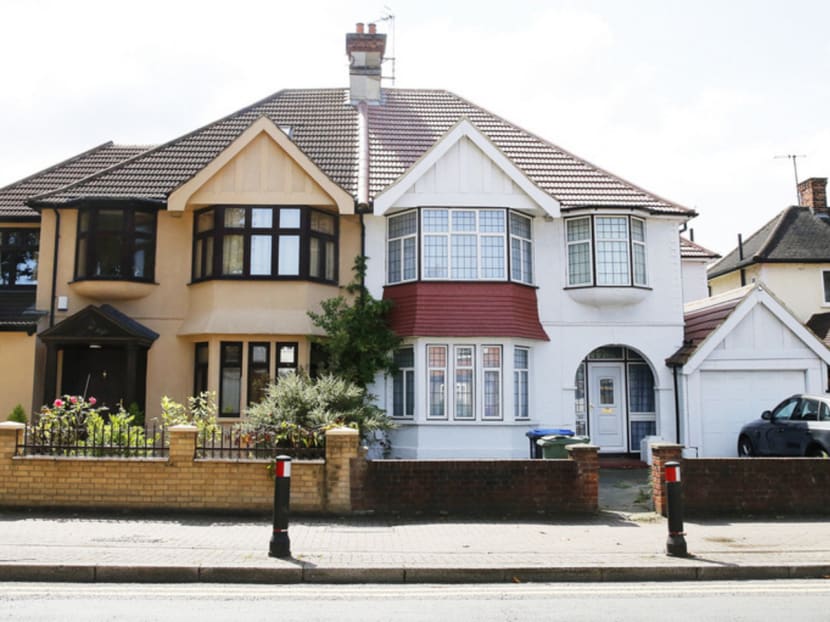Homing in on an overseas property
Singaporean investors are one of the largest capital sources of outbound property investments among Asian investors.

Countries such as the United Kingdom have legal restrictions on the types of properties foreigners can buy. Photo: Reuters
Singaporean investors are one of the largest capital sources of outbound property investments among Asian investors.
Good quality properties in predominantly English-speaking countries such as Australia and the United Kingdom, as well as those in neighbouring Malaysia, continue to appeal to local investors.
While parking funds in assets in a foreign land may be daunting for first-time investors, good planning and due diligence can help mitigate the risks involved and achieve good returns on the investment. A wide range of factors, including affordability, legislation, destination choice and macro risks, should all be considered as they may make or break your deal.
AFFORDABILITY AND FINANCING OPTIONS
Identify the reasons for investing, your payment ability and financing options. Is the property intended as a vacation home or mainly for rental? Renting out the apartment can potentially cover your loan repayments if it is financed with a bank loan.
For a property purchased at S$1 million with a loan for 80 per cent of the value, the repayments will work out to about S$3,372 a month for a 30-year term at an assumed interest rate of 3 per cent per annum.
Renting out the property at S$5,000 a month will give you a comfortable yield that will not only finance your loan but also allow you to earn additional income.
Remember to include other costs such as legal and valuation fees, taxes like income tax, property tax, capital gains tax and local government tax, as well as insurance premiums.
Various financing options are available in the market. If you are considering a bank loan, the Total Debt Servicing Ratio (TDSR) framework is something you need to be mindful of. Under the TDSR imposed by the Monetary Authority of Singapore in June 2013 to ensure prudence in borrowing and lending practices, the home loan must not push the total debt repayment obligations of the mortgagor beyond 60 per cent of his or her gross income.
It is applicable to financing overseas properties and may thwart your plans if you already have existing housing loans pushing your debt obligations close to the limit.
LEGISLATION
Conducting research and understanding the laws pertaining to foreign property ownership in the countries you are looking to invest in are critical before you decide on your choice location. Investment-friendly countries will ease the purchase process and may offer better returns.
For instance, Australia, Malaysia and the UK have legal restrictions on foreign investors, such as the property types they can purchase, as well as a range of property-related taxes.
On the other hand, emerging markets such as Vietnam and Myanmar have updated laws to welcome foreign investments. Starting from mid-2015, foreigners are allowed to purchase residential property, including condominiums and landed property, in these countries — a shift from the past where foreigners were only allowed to buy condominiums.
Besides helping you decide on your destination choice, getting familiar with the country’s legislation can help avert the dangers of breaking the law or getting into unnecessary trouble with the local authorities unwittingly. Having qualified marketing agencies on hand may be useful in managing such risks.
ENVIRONMENT OF LOCALE
The environment of the locale affects returns. Locations close to areas at risk of natural disasters are not ideal since the potential threat to residents and damage to property will be deterrents to tenants or future buyers.
An area’s transport infrastructure can also be a boon or bane to yourinvestment. A location that has excellent connectivity or with transport nodes being developed, is likely to clinch higher rentals compared to one that is highly congested or has poor infrastructure, even within the same country.
FUTURE DEVELOPMENTS
Proposed amenities in the vicinity and future development plans are important as well. Plans to construct malls and improve transport infrastructure are likely to lift property prices once the developments are complete.
Conversely, a relatively underdeveloped area without any improvement plans in sight is unlikely to see its property prices climb significantly.
QUALITY OF DEVELOPERS
Having a good idea about the developer and the project will benefit your investment. The developer’s reputation will provide an indication of project quality, but you should get to know more about its other property ventures.
This will offer insights into the developer’s cash flow and duration of the development if it is a new launch. You will not want to wait too long for a project to be completed since your cash is already locked in.
In essence, enter with your eyes open. Good planning is key to good investment. Your ultimate goal is to net a good property that can bring in positive returns.
Assessing the product and market well can mitigate risks and maximise your yield, bringing you a step closer to a smart and informed decision.
ABOUT THE AUTHOR: Sean Tan is the Singapore General Manager and Chief Business Development Officer at real estate portal iProperty Group.





